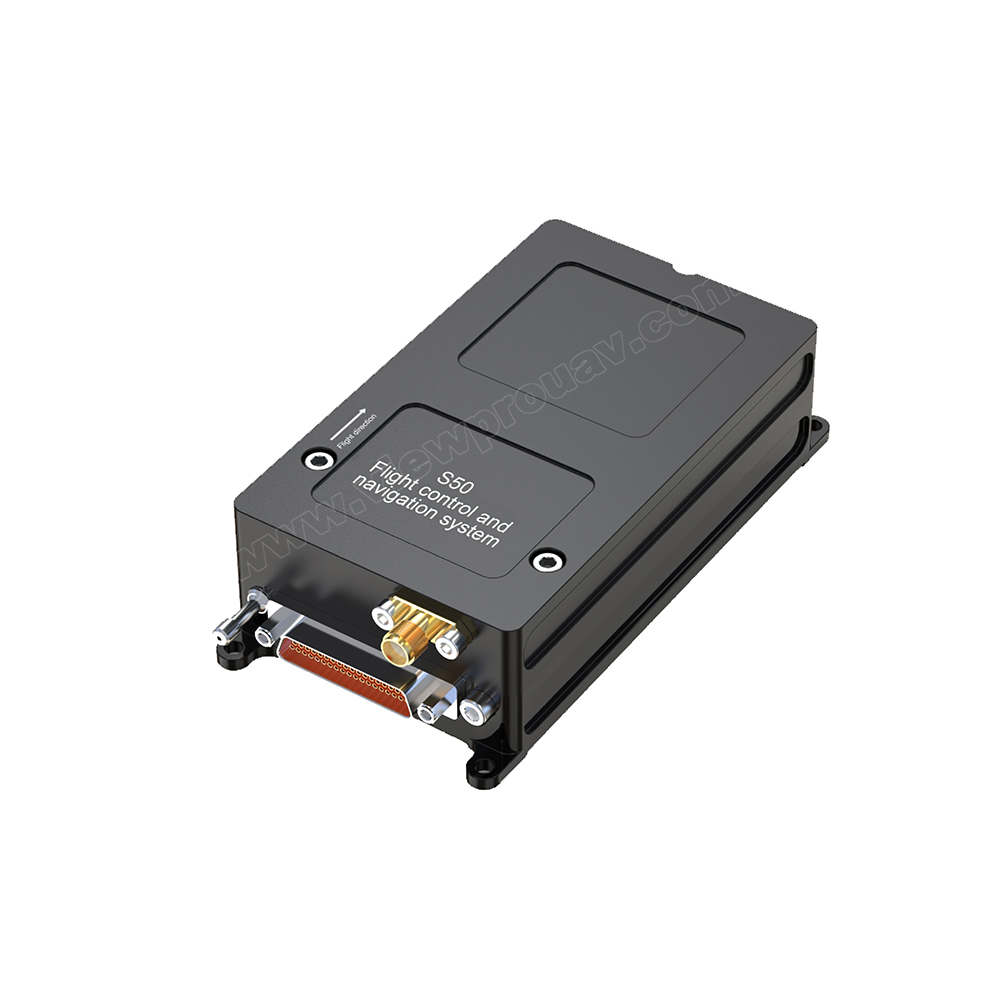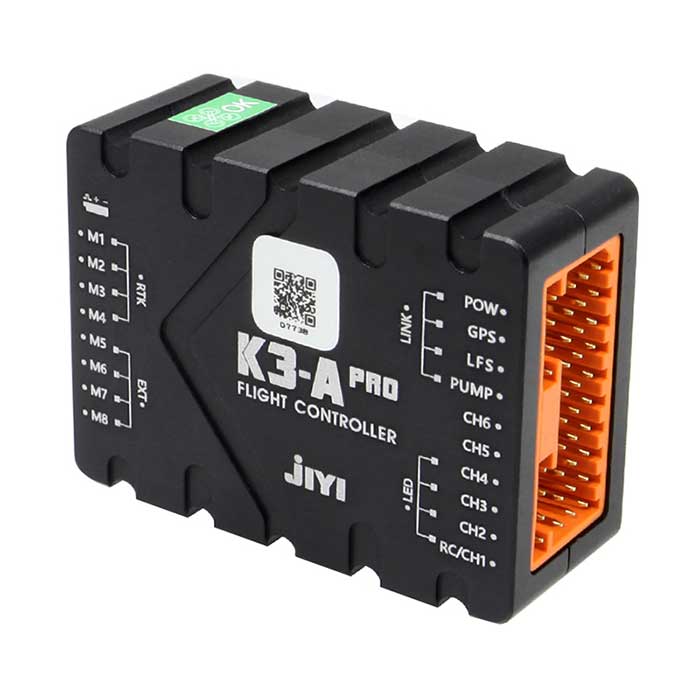Improve Drone Performance with SparkNavi Drone Flight Controller and GNSS/INS Made in Taiwan
Improve Drone Performance with SparkNavi Drone Flight Controller and GNSS/INS Made in Taiwan
Blog Article
Checking Out the Function of Drone Trip Controllers in Enhancing Flight Security and Navigating Efficiency
The development of drone modern technology has considerably enhanced the relevance of trip controllers, which work as the mind of these airborne automobiles. By integrating real-time data from a selection of sensing units, flight controllers enhance flight security and navigating performance, ensuring that drones can operate smoothly also in complex environments. This discussion will explore the essential elements that contribute to these enhancements, as well as the implications for the future of self-governing flight. What technologies lie ahead that could even more change the abilities of drone trip controllers?

Understanding Flight Controllers
Trip controllers are important components in the functioning of drones, functioning as the brains that stabilize and take care of flight procedures. These advanced devices process information from different sensing units, consisting of accelerometers, gyroscopes, and GPS, to guarantee that the drone preserves its intended trip course. The trip controller translates this information and carries out commands based upon pre-defined algorithms, enabling the drone to react to environmental modifications, such as wind or obstacles.
The primary feature of a flight controller is to maintain security during flight. It achieves this by making real-time changes to the drone's motors and control surfaces, guaranteeing equilibrium and control. In addition, modern trip controllers integrate innovative features such as waypoint navigation, enabling automated trip courses and improved functional effectiveness.
Recognizing the style of trip controllers is important for both hobbyists and experts. They generally include a microcontroller, firmware, and different interfaces for sensor input and communication. As innovation breakthroughs, trip controllers have actually become more portable and capable, incorporating expert system to adjust and boost decision-making processes to complicated trip scenarios. This evolution symbolizes a crucial growth in the drone sector, leading the way for extra advanced applications and much safer procedures.
Key Elements of Flight Stability
Accomplishing optimum trip stability in drones relies upon numerous vital elements that operate in concert to guarantee controlled and smooth procedures. Central to this stability is the flight controller itself, which processes data from various sensors to maintain the preferred flight attitude. This consists of accelerometers and gyroscopes that determine motion and orientation, permitting for real-time adjustments to the drone's setting.
One more critical part is the digital speed controllers (ESCs), which manage the power supplied to the electric motors. By carefully adjusting motor speeds in feedback to trip controller commands, ESCs aid maintain equilibrium and combat disturbances caused by wind or unexpected activities.
Furthermore, the design of the drone's frame plays an essential role in trip stability. A well-structured frame minimizes vibrations and improves the overall aerodynamic account, contributing to smoother trip characteristics. The assimilation of innovative algorithms within the flight controller aids in predictive modifications, ensuring a responsive and adaptable trip experience.
With each other, these components create a natural system that enhances a drone's security, enabling precise handling and improved performance in various flight problems.
Navigating Performance Strategies
Effectiveness in navigation is crucial for enhancing drone procedures, particularly in complicated environments. Efficient navigating techniques improve the capability of drones to pass through tough terrains and prevent barriers, thereby boosting functional efficiency and safety.
One noticeable method is the execution of sophisticated GPS and inertial dimension systems (IMUs) that give precise location monitoring and alignment data. These technologies permit drones to calculate optimal trip courses in real-time, taking into consideration various variables such as wind conditions and prospective challenges.
One more strategy involves the use of algorithms for course preparation and optimization. Formulas such as A * and Dijkstra's formula can be released to identify the most effective course while minimizing power usage and trip time. Integrating maker understanding designs can make it possible for drones to adaptively learn from their settings, improving navigation abilities through experience.

Impact on Autonomous Drones
The assimilation of sophisticated navigating methods has profoundly transformed the abilities of self-governing drones, allowing them to operate with higher autonomy and precision. SparkNavi drone flight controller and GNSS/INS made in taiwan. These improvements are largely credited to sophisticated flight controllers that use real-time data handling and sensing unit combination, allowing drones to navigate complicated settings flawlessly
The effect on independent drones prolongs beyond plain more information navigating; it incorporates boosted challenge evasion, enhanced stability during dynamic problems, and increased goal integrity. By leveraging algorithms that integrate artificial intelligence and synthetic knowledge, drones can adjust to changing conditions, making educated decisions that maximize their flight paths while decreasing risks.
Furthermore, the application of durable flight controllers has facilitated the execution of complex tasks, such as aerial assessments, shipment services, and agricultural tracking, with minimal human intervention. This capacity not only streamlines operations but likewise minimizes human mistake, therefore enhancing overall security.
Therefore, the functional extent of self-governing drones has actually increased substantially, making them crucial devices in various industries. Their capacity to execute effectively in varied circumstances emphasizes the essential duty that advanced trip controllers play in forming the future of unmanned airborne systems.
Future Fads in Flight Control
Often, advancements in trip control innovation are positioned to redefine the landscape of drone operations in the coming years. Emerging patterns suggest a considerable shift towards enhanced expert system (AI) assimilation, allowing flight controllers to process real-time data extra successfully. This evolution will assist in better decision-making capacities, enabling drones to adapt to vibrant environmental problems autonomously.
Moreover, the application of maker knowing algorithms is expected to improve anticipating upkeep, thus decreasing downtime and prolonging the lifecycle of drone elements. This positive approach to upkeep will certainly be critical as drone applications broaden across different sectors, from farming to logistics.

.jpg)
Finally, advancements in protected interaction protocols will deal with safety and regulative concerns, ensuring that drones can run perfectly in busy airspaces (SparkNavi drone flight controller and GNSS/INS made in taiwan). Jointly, these fads aim in the direction of a future where trip control systems are not just smarter and more efficient however likewise qualified of operating safely in a significantly incorporated airspace
Verdict
Finally, drone flight controllers are important to improving trip security and navigation effectiveness via the sophisticated processing of sensing unit information. By keeping optimal trip mindsets and employing sophisticated formulas for course optimization and obstacle avoidance, these controllers considerably contribute Read More Here to the freedom and functional safety and security of drones. As technology continues to develop, even more improvements in trip control systems are anticipated, guaranteeing improved performance and broadened abilities in the realm of unmanned airborne vehicles.
By integrating real-time data from a variety of sensing units, trip controllers enhance flight security and navigating performance, guaranteeing that drones can run efficiently also in complicated atmospheres.Trip controllers are integral elements in the functioning of drones, serving as the brains that support and handle flight operations. Additionally, contemporary flight controllers integrate sophisticated features such as waypoint navigating, permitting for automated trip paths and enhanced operational performance.
Central to this security is the trip controller itself, which processes information from numerous sensors to maintain the desired trip mindset.In conclusion, drone trip controllers are essential to boosting trip security you could try these out and navigating effectiveness through the innovative handling of sensor information.
Report this page